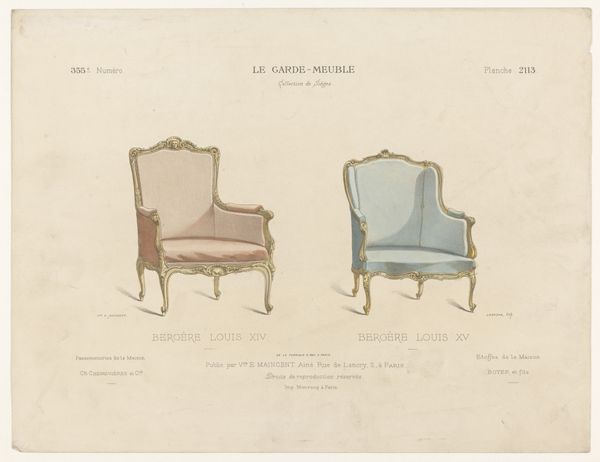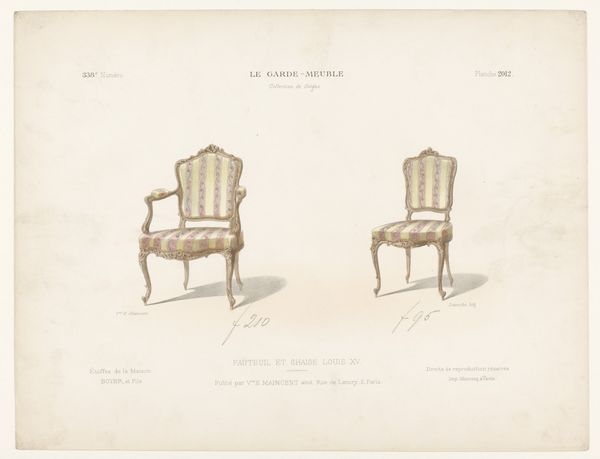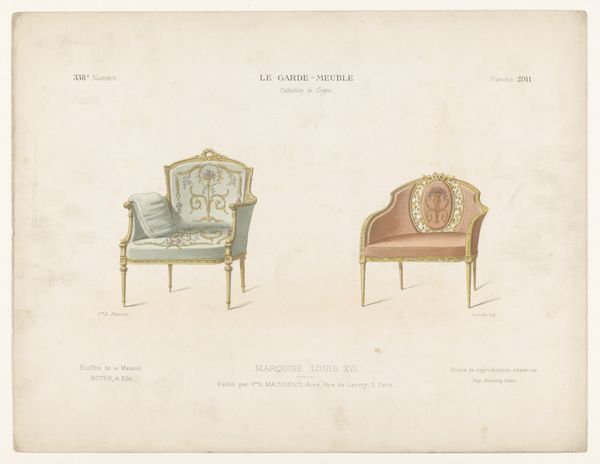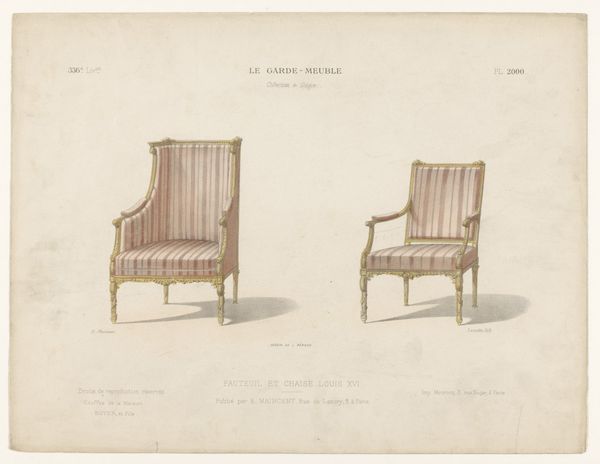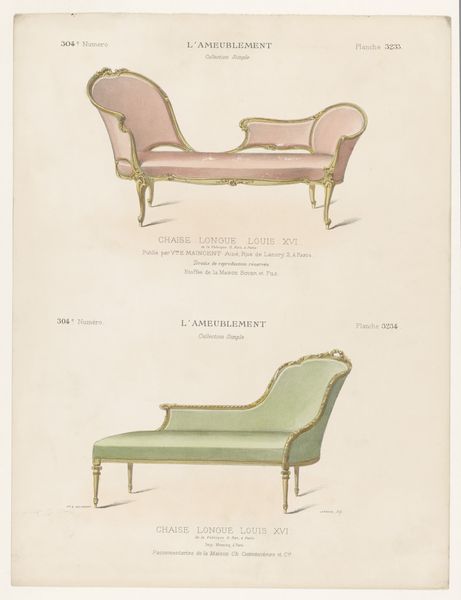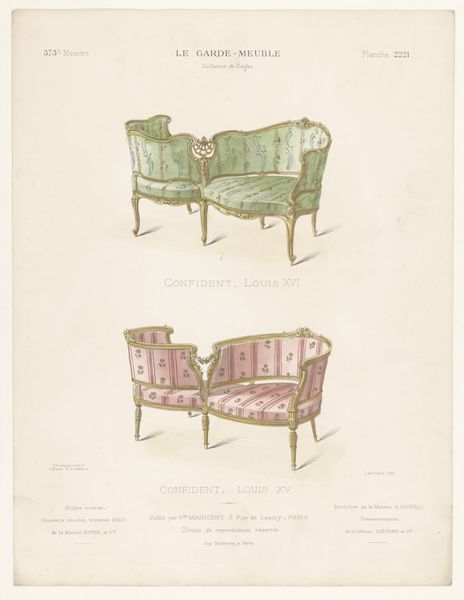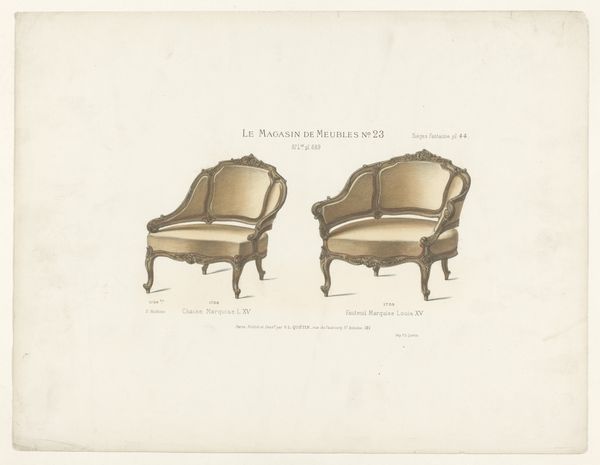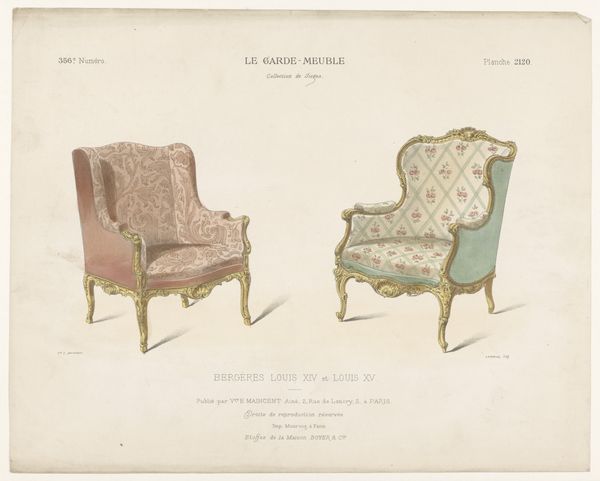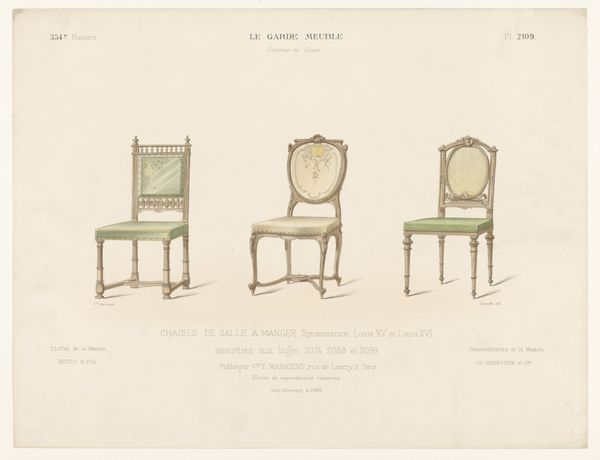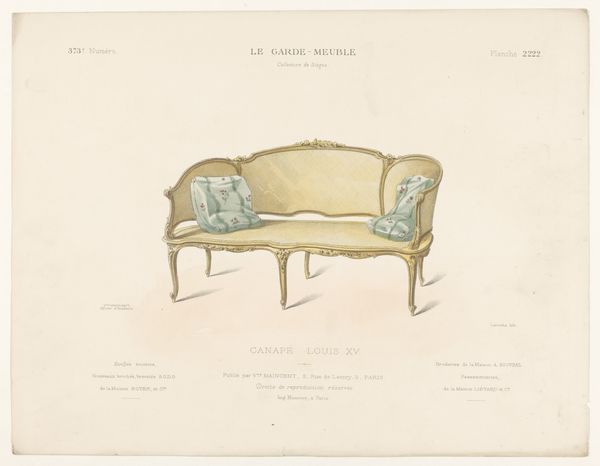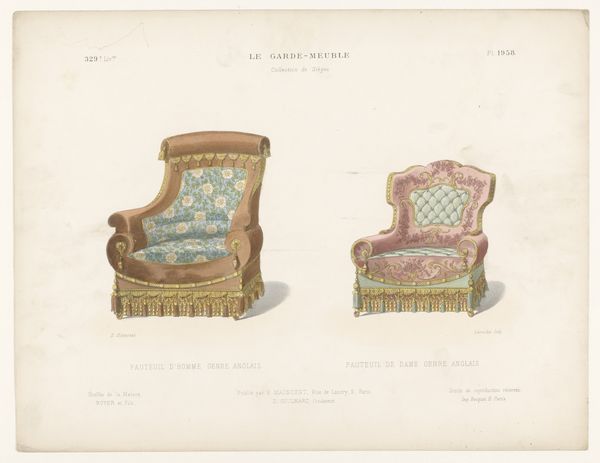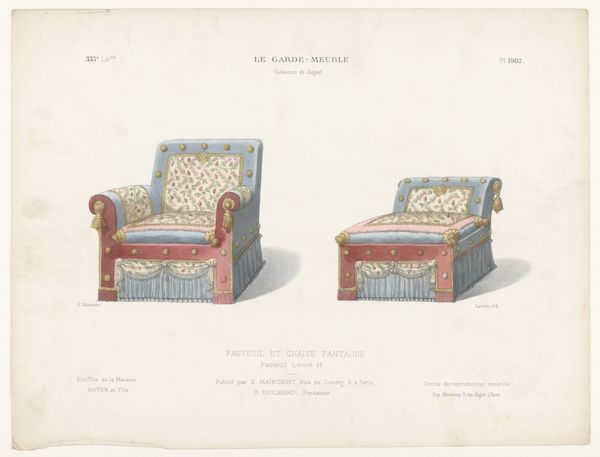
Dimensions: height 277 mm, width 355 mm
Copyright: Rijks Museum: Open Domain
Curator: This drawing by Léon Laroche presents us with a pair of armchairs, rendered in watercolor, dating from between 1895 and 1935. What catches your eye initially? Editor: An interesting, subdued elegance. There's a softness to the rendering, particularly in the textiles of the chairs, that evokes a sense of refined domesticity and material comfort. The method brings out the details of their possible creation by different entities and levels of mastery and specialism. Curator: Indeed, the rendering emphasizes the textures and patterns. Laroche highlights, on one side, what he labels as a Louis XV style armchair and, on the other, an armchair styled Louis XVI, making each not just furniture but an artifact, weighed down by its historical and symbolic baggage. What would each style be meant to invoke? Editor: The styles suggest different material values and systems. The Louis XV on the left evokes the rococo exuberance, perhaps a sign of a particular moment in craftspersonship. And then, next to it, the Louis XVI chair seems to show neo-classical austerity – are we moving away from a reliance on handcrafted expertise toward more rational modes of production? Curator: Absolutely. And, further, consider that these aren't merely depictions, but seem to have served as design models. Each element is meticulously noted for a reason. Someone would be using this sheet in crafting or commissioning furniture. And these chairs weren’t just for sitting. They're markers of identity, signifiers of wealth, status, and, let's not forget, power. Editor: Of course! We're really seeing not just chairs but potential commodities. The attention to detail—the weave of the fabric, the gilding on the frame – are indications of both value and the manual labour invested in the process of bringing these chairs to life. How would they each transform a room, each setting or building space? Curator: One can imagine each adding a regal bearing and invoking its cultural pedigree to its prospective residents. The design may be simple, but in a strange twist it invites conversations about its cultural roots. There’s a real conversation occurring across the eras of the furniture itself, in effect bringing back past personalities from earlier moments. Editor: Thinking about Laroche reproducing the pieces like this makes us focus on the question of accessibility, in the sense of commodification, and also a democratization of craft in relation to labor. Did people have the possibility to recreate it, consume it and possess it without the manual skills once considered crucial? Curator: Food for thought. I come away contemplating the role of design in shaping identity. Editor: And I'm reflecting on how art informs consumption, and conversely, how social and economic landscapes are forever molded through material processes.
Comments
No comments
Be the first to comment and join the conversation on the ultimate creative platform.
